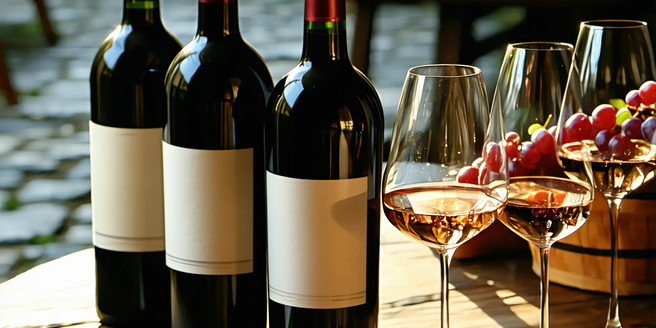
The Art of Tasting: A Beginner’s Guide
Learning the art of tasting wine is an essential skill for any enthusiast. It involves engaging your senses to explore the aroma, taste, and texture of the wine. Beginners should start by observing the color and clarity of the wine, as these attributes can hint at its age and quality. Swirling the wine in a glass helps release its bouquet, allowing you to discern different aromas. Tasting involves taking a small sip and letting it roll across your palate, identifying flavors, acidity, tannin, and body. It’s important to note that tasting is subjective and varies from person to person. Recording your impressions in a journal is an excellent way to track your preferences and expand your understanding over time. The key is to savor and enjoy the experience, not to rush through it.
Exploring Different Varieties: Reds, Whites, and Beyond
Diving into the world of wine, one quickly encounters a vast array of grape varieties, each offering distinct flavors and characteristics. Red wines, such as Cabernet Sauvignon, Merlot, and Pinot Noir, often feature bold, rich flavors and can vary greatly in tannin levels and maturity potential. White wines, like Chardonnay, Sauvignon Blanc, and Riesling, are known for their crispness, brighter acidity, and aromatic profiles. Beyond the basics, there are rosé wines, which sit between reds and whites in terms of body and color, and sparkling wines, ranging from Champagne to Prosecco, known for their effervescence and celebratory nature. Understanding the primary characteristics of each variety is invaluable for appreciating their unique qualities and finding the perfect match for your taste preferences and occasions.
Pairing Wine with Food: Tips for a Perfect Match
Pairing wine with food is an art that enhances the dining experience. The right pairing can elevate both the flavors of the wine and the dish. A basic principle is to match the weight and intensity of the wine with the dish, such as a full-bodied red with hearty meat dishes or a light white with delicate fish. Consider the dominant flavors of the dish; for example, Sauvignon Blanc pairs well with citrus or herb-based dishes due to its zesty profile. When dealing with spicy foods, a slightly sweet wine like Riesling can balance out the heat. Acidic wines work well with acidic dishes, like tomato-based sauces, while tannic wines complement protein-rich foods. Experimenting with pairings is key to discovering combinations that delight your palate.
Understanding Terroir: How Geography Influences Flavor
Terroir is a French term that embodies the unique environmental factors affecting a vineyard, contributing to the wine’s distinct character. These factors include the climate, soil type, topography, and even the vineyard’s surrounding ecosystem. A region’s climate influences grape ripening and sugar levels, thus affecting the wine’s flavor profile. Soil composition impacts the vine’s nutrient uptake, playing a significant role in the complexity of the wine. Cool climates generally produce wines with higher acidity and more subtle flavors, whereas warmer regions yield wines with fuller body and richer fruit notes. Even factors like the vineyard’s proximity to water bodies can contribute to its terroir. Understanding how terroir impacts wine can enhance your appreciation of its unique qualities and the elements captured within each bottle.
Etiquette and Tips for a Memorable Wine Tasting
Attending a wine tasting requires both etiquette and openness to create a memorable experience. Begin by dressing appropriately for the venue; many wineries appreciate business casual attire. Pacing is crucial—sip slowly to savor each wine, and hydrate with water between tastings to keep your palate fresh. Engage with the host, asking questions about the wines, the process, and any recommendations they might have. Holding the glass by the stem prevents fingerprints and warms the wine. Make notes if you find a wine particularly pleasing, as this helps in future selections. While spit buckets are provided, swallowing is optional, especially if multiple wines are on offer. Most importantly, keep an open mind and be willing to broaden your palate beyond familiar favorites.
Top Destinations for Wine Lovers Around the World
For wine lovers, exploring top wine destinations around the globe offers a captivating experience. France, with its iconic Bordeaux and Burgundy regions, presents an exquisite taste of tradition, with vast vineyards and historic châteaux. Italy offers diverse wine tours, from Tuscany’s rolling hills to the sun-drenched coasts of Sicily. In Spain, Rioja and Ribera del Duero are renowned for their robust red wines. The Napa Valley in California and Australia’s Barossa Valley are famous for their bold New World wines. South Africa’s Stellenbosch, with its stunning mountain backdrop, provides a mix of history and innovation. Traveling to these regions is a journey through different cultures, climates, and winemaking philosophies, each offering a unique taste of their landscape.
